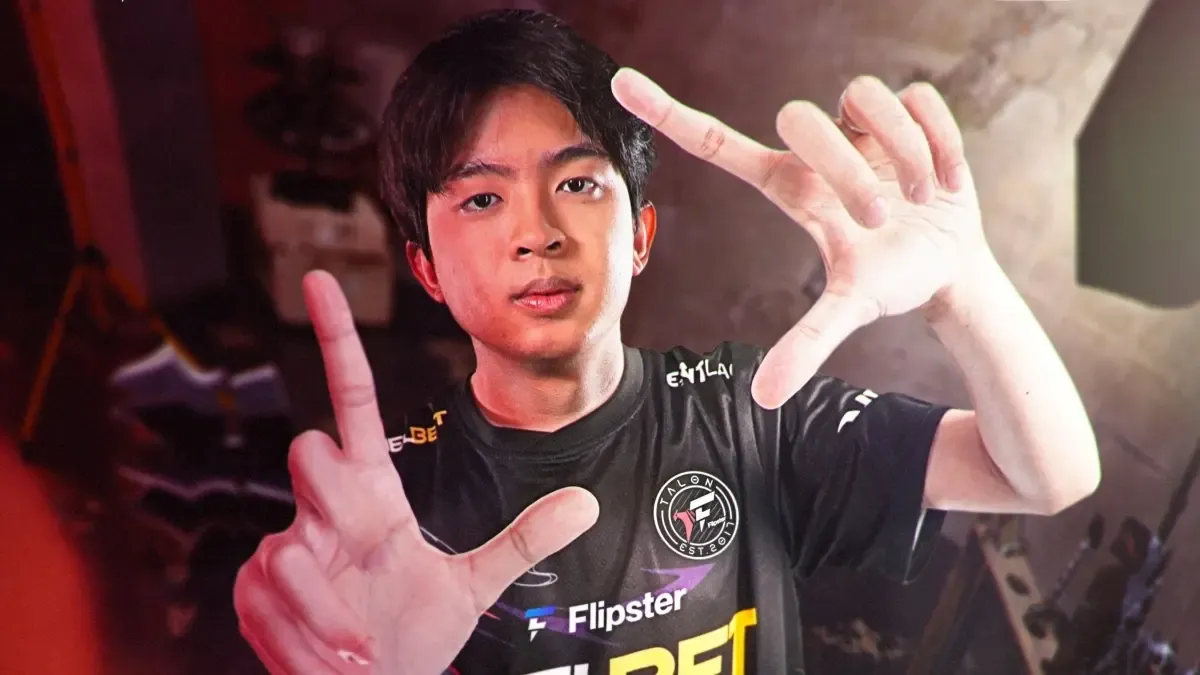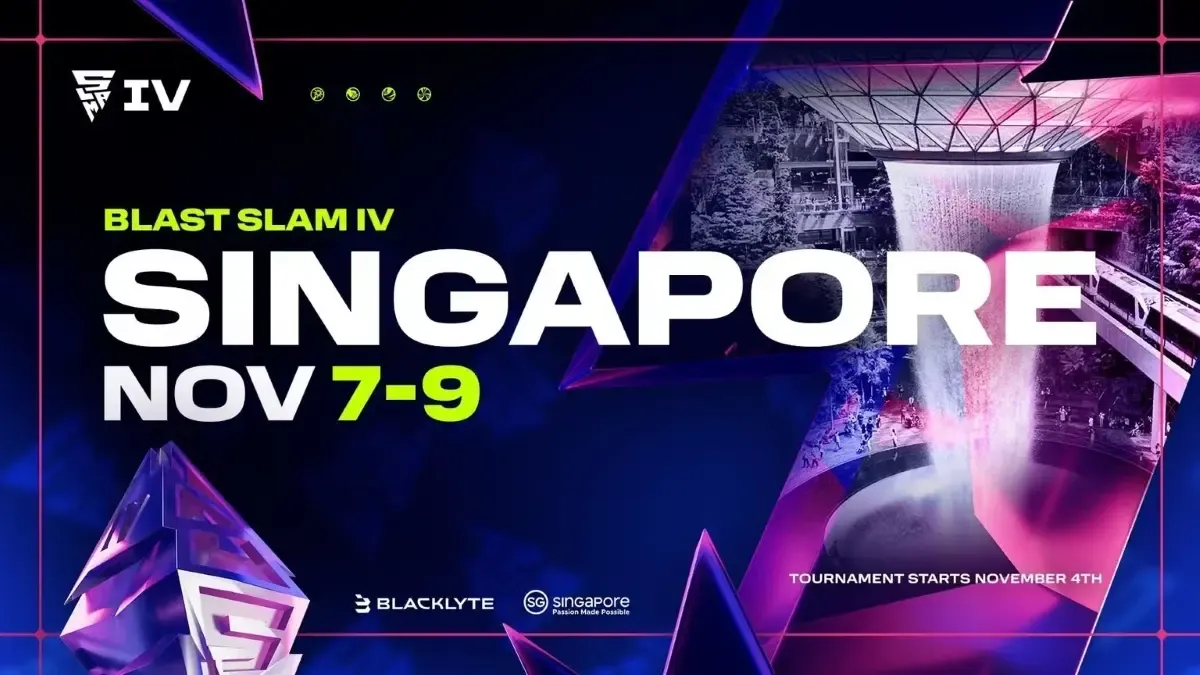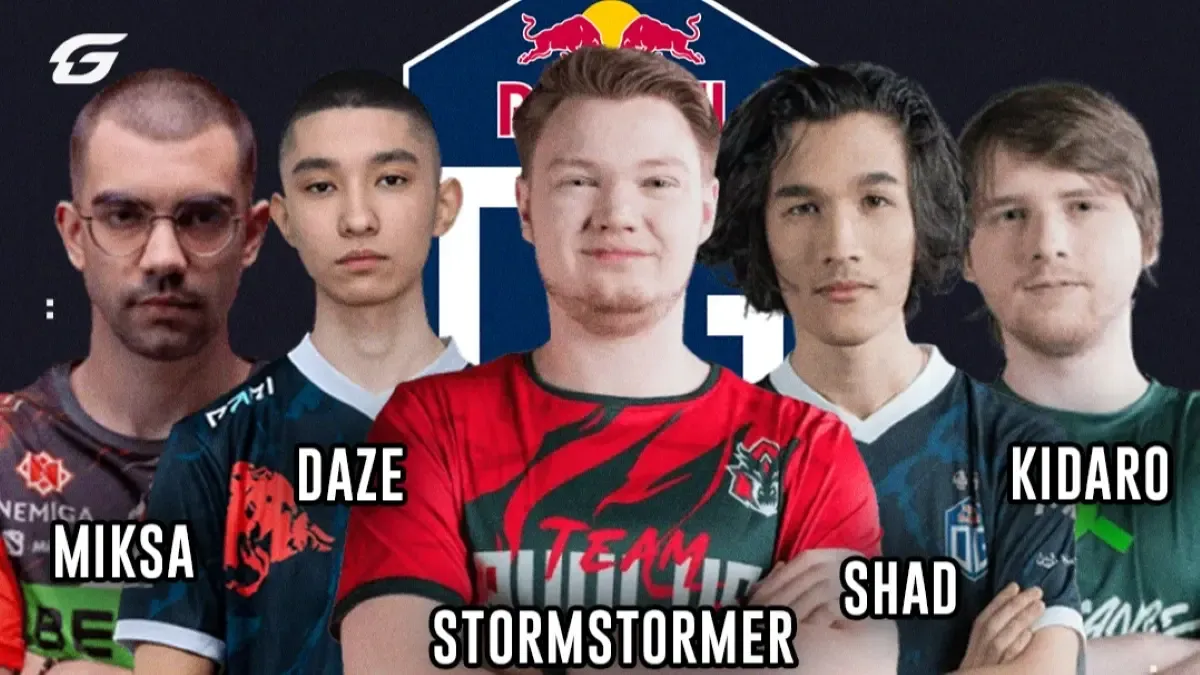
?Note: All prices in this article are in USD.
What is the Dota 2 Trading Economy?
Ever noticed that some heroes just look different from what you remember them to be? Ever seen that ridiculously impressive glowing courier leaving a trail of fire, or that Golden Baby Roshan? Have you tried clicking on the magnifying class at the hero portraits to look at the cosmetics they have equipped?
Cosmetics in Dota 2 are more than just hats. They are part of the free-to-play model by Valve and here to stay for the long haul. Cosmetics provide ways of customising our favourite heroes, while fulfilling the criteria of being lore-friendly and attuned to the original hero concept. Most cosmetics arrive in the game through the Steam Workshop, which is vetted by both Valve developers and the community.
The Dota 2 store pays a cut of sales to the creators of published items, thus incentivising community contribution while simultaneously freeing up developer time to work on the game. The workshop also functions as a screening process for the popularity of any cosmetic, with the community acting as crowd sourced quality control. Sets, single items, couriers, wards, HUDs and the like are approved through the Workshop before they arrive in the Dota 2 store. It is possible for contributors to submit both sets and single items, and sets will reach the store if approved. Individual items are bundled together into chests which require specific keys to open, for random chances at acquiring each individual item. New chests ensure that new keys are continually bought by players to get their hands on the items, ensuring continual profits for Valve.

The Dota 2 store is based on the micro-transaction model, which banks on the fact that humans are psychologically less reluctant to spend small sums more frequently. This model ensures that Dota 2 is free to play, as it had been in WC3 DotA and its iterations through Garena. This model has been validated by both (dare I say it) Riot's League of Legends as well as Valve's very own Team Fortress 2. The free-to-play release and consequent influx of cosmetics items into Team Fortress 2 netted Valve 12 times more profit compared to selling the game itself. (EuroGamer, 2012)
With over a hundred heroes freely available to play and customise, free and regular item drops, a well-equipped store with multiple sets, a plethora of couriers, unusual effects, and colours to choose from, what is going on right now?
The Current Trading Scene
The number of items and money being channelled into the micro-transaction model of Dota 2 has led to the rise of traders. A successor of the TF2 metal/hat/unusual economy, the sheer number of Dota 2 players means that there is a much larger market, and an attendant larger group of traders.
Traders are thus people who buy and sell Dota 2 cosmetics to other traders and non-traders alike, and they seek to profit by generating excess value between trades – the rudimentary buy low, sell high model. This is a direct abstraction from the micro-transaction system already existent in Dota 2, such that traders seek to conduct trades on specific items, sets, couriers and so on independently.
At the same time, traders generate this excess value by converting time into profit – they bank on the desperateness of buyers/non-traders who wish to get their items quickly, and tend to be unwilling to spend time haggling. For a non-trader, it is extremely inconvenient and time consuming to spend time haggling for items, especially for individual items. Traders step in here to create sets which they can then sell for a premium, and buyers are willing to pay more for the convenience and speed the traders provide.
These items and sets are pegged to prices in terms of keys – the organic currency between cash and items. Keys may be bought at $2.49 from the Valve store, roughly $2.30 from the steam market, and $1.80 from traders, who trade in bulk via paypal. Due to a lack of a natural smaller currency, items og rarity 'Rare' are the consensually recognised 'coinage' currency, with a key worth about 5 to 6 random rares.
However, set making and normal quality items is just one small facet of trading. The really big money in trading is in the courier, genuine items and immortal trade. Many of these items can be considered big ticket items, and can be sold directly for cash on Paypal, bypassing the key conversion process.
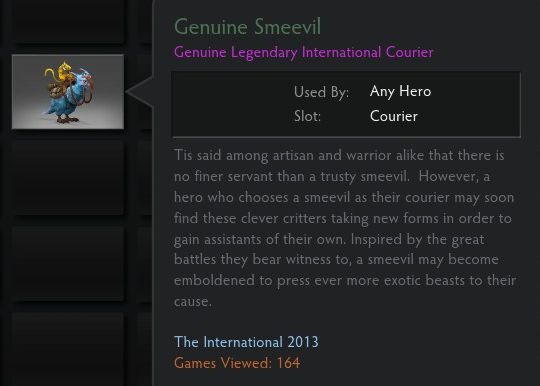
- Genuine-quality items are items received upon buying official Valve merchandise. These genuine items are usually pegged to the price of the physical items they are bundled with.
- Immortal-rarity items are items that will never be produced or dropped again; that is, whatever exists right now will be all that exists forever.

- Unusual-quality items are limited to couriers (for now) and they give the courier special effects that would not exist in a normal one. Unusual effects range from glowing eyes to fire/plant trails, and prices of the couriers are determined by the following flowchart:
Effect -> Colour (if non-seasonal effect) -> Courier itself.
These trades are mostly conducted on a few popularly frequented websites. Dota2Lounge has extremely high traffic as it is coupled with their betting system. JoinDOTA and PlayDota are two popular forums with trade sections, while Dota2Traders and Reddit (/r/Dota2Trade) utilises a forum format in conjunction with SteamRep as a community means of policing for scammers. TF2Outpost and Dota2Marketplace both use visual, itemised layouts for traders.
It is almost inevitable that the average Dota 2 player will encounter a trader when he wishes to trade items to complete a set. The only alternative is the recent introduction of the Steam Community Market as a venue for people to sell their items. Money made from sales remains within the Steam wallet, to be spent in the Steam store. Valve also takes a 15% cut on all sales, generating more profits on top of the economy.
So what are some of the problems faced by non-traders?
The most common complaint about the Dota 2 trade economy is the frustration faced by many non-traders in the market. The typical end user is faced with a huge mess of arbitrary values in this free market run by traders. The buying and selling in this market is completely dependent on individuals, since there are no fixed prices. Price lists are not trusted as they may be manipulated by those updating them. Traders themselves are unwilling to compromise on prices, which may seem unfair to those who are not part of the system.
This is perhaps best seen in the rare trade, where traders trade most rares at a 2:1 rate, with specific exceptions. At the same time, traders are also unwilling to accept what they term 'trash rares', typically items belonging to Axe, Witch Doctor, Sven, Morphling, Omniknight. Non-traders see their rares as of equal value, since they do not account for the rarity and demand for specific rares. This leads to much conflict even when non-traders are willing to meet prices, because traders reject the rares that they offer, or even rudely pick and choose rares from the non-trader's inventory.
Inflation
Non-traders looking to purchase big ticket items also face an uphill battle against inflation, hoarders and sharks. The inflation is mostly seen in Immortal items, of which there will never be an increase in number. When put against the Dota 2 player base's exponential growth, it is natural for prices of these immortals to rise.
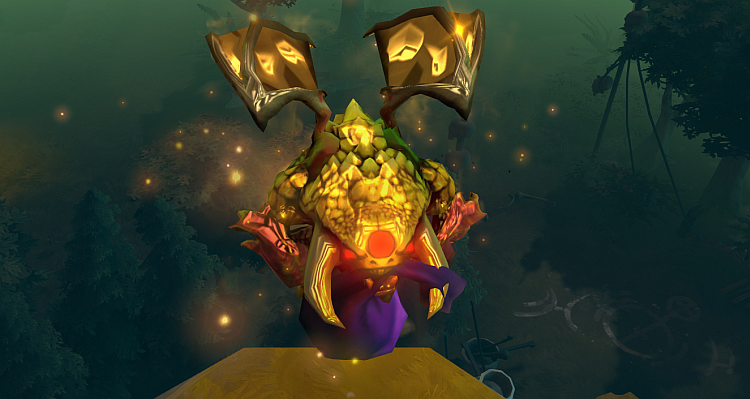
Picture by Dota-Trade.com
Perhaps the most infamous immortal item is the Golden Baby Roshan (GBR). This courier originated from Diretide 2012, and only 70 were ever given out – 10 each week to the 10 players who could kill the event Roshan the fastest worldwide. On release, the GBR was offered to be bought for $1,000 USD. A year later, and you'd be hard pressed to find one cheaper than $5,000 USD. A Cycle 1 GBR can cost as much as $20,000 USD.
Other couriers that will burn a hole in your pocket are Legacy couriers. These are couriers with the standard, non-seasonal effects, but with unique colour codes. They were only available for a short period in June 2012, when Valve decided to allow owners of unusual couriers to modify the colours of their unusual couriers on RGB sliders. Extremely high premiums are paid for these unique couriers, especially if they have a good effect (such as Ethereal Flame) and all the more so if they have pinkish, whitish, or greyish colours.
However, not all immortal items will rise in price. The Golden Greevil, a prize awarded en masse for encountering a special NPC in the Greeviling 2012, is still worth a paltry 2 keys today. This suggests that the seemingly arbitrary pricing of items in the market is going back to Economics 101: it revolves around the elementary supply and demand interaction. The price of items is determined at the intersection of the supply and demand, and that equilibrium price is the market price.
Hoarders
This supply and demand interaction is more easily abused in the case of hoarders, especially for genuine items. Genuine items come bundled together with items from the Valve store – shirts, gaming headsets and so on. The issue here is that the genuine items are exclusive to the apparel and accessories from the Valve store, and thus are replenished together with the physical items. The limited supply creates a bottle neck on the release of such items into the market.
This problem is exacerbated by the fact that the Valve store does not impose any limits on people buying up items from the store. This allows the traders who have mass ordered these items to control the supply and thus the prices. The crux is that the digital items are the main draw – the digital items are often sold at 2-3 times more than the original price from the Valve shop. Meanwhile, a quick search on eBay shows many shirts (especially the Brewmaster Primal Split design) going at much lower prices.

This change in price is exemplified in the price of the Flowering Treant item, bundled with the Nature's Prophet plushie from the Valve store. The dramatic price flutuation you see in the graph above is the result of Valve re-releasing the Nature's Prophet into the Valve store, resulting in panic selling, as well as a much larger supply. The current lowest price though, is still $87, more than twice the $40 original cost price of the plushie.
Major reasons for the high prices is the prohibitive shipping costs that the Valve store charges to most countries outside North America, or that Valve simply does not ship worldwide. The demand for these items is thus escalated by these consumers who wish to own the digital items.
The limited supply will take a long time to solve itself, since it is completely dependent on Valve to produce more physical items to be bounded together with the genuine digital items. In the meantime, prices will continue to remain extremely high, and the hoarders will continue to maintain high profit margins.
Sharks
Sharks are traders who "unscrupulously exploit or swindle others". These sharks are commonplace in the Dota 2 trade economy, and they will do all they can to make a profit. These include trade scams, jacking prices to obscene levels, or simply just offering extreme prices to potential buyers and sellers.
Trade scams are a ubiquitous problem, be it for trader or non-trader. These scams include phishing links, renaming items, applying description tags to items, swapping items mid-trade, or even performing chargebacks on Paypal. Other seasonal scams have included using coloured text messages to falsify a Steam Wallet fund transfer, or proposing trade offers with promises of Steam Wallet funds as part of the transfer.

Screencap of a common scam attempted nowadays, abusing the recently implemented Trade Offers system. The scammer uses text to suggest that they will pay you cash via the Steam Wallet, but it is actually a blank trade on his side. Also, some other clear signs that a scammer is at work is the misspelling (not, instead of note) and the bad math (5% of $32.04 is $1.60).
Sharks thus prey on those the gullible, as well as those without proper knowledge of prices. When perusing many of these trade websites, one will often notice the term "add me for fast trade" used by many traders. This is usually accompanied by a 'lowball' offer, meaning that their offer is undervalued in the trade. By insisting on fast trades, the shark does not give the victim any time to properly research on prices, or wait out for better offers. The victim believes he is getting a 'fair' or 'good' trade until he takes the time to check, and then to realise that the shark has underpaid him by a large margin.
So why are there these problems?
At the end of the day, this is a thriving economy run exclusively through the internet. The only exception occurs when there are physical meet ups for large sales (think GBR-scale). Otherwise, across the internet, there is absolutely no way of institutionalising the economy. Price lists do not work: they are not updated frequently enough, and can be manipulated by the editors for their own benefit. The formation of cartels is highly improbable because there is no significant concentration of wealth in a few firms or individuals. Fairness does not, and cannot exist when individuals are out to maximise their individual profit. There is no governing body or institution that can step in to regulate the economy, save Valve.
Yet, Valve has no incentive to manage this market. They are first and foremost a capitalist company, seeking to generate revenue from their work. It just happens that their specialisation is in video games, and consumers like us fund their work. How Valve has shaped the economy by tweaking its rules, release of items, and the Steam Community Market points to the fact that they are focused on maximising profits for themselves while leaving the economy to govern itself.
Valve has recently stepped up scamming protection with changes to the trade system where you can report suspected scammers, and so on, but is it enough? In the absence of Valve, there exist various forms of community regulation developed by traders to ensure that their profession can continue to thrive. Regulations exist through SteamRep, a website any player can report scammers to, as well as scammer threads on Dota2Traders.
However, these forms of community regulation are simply not enough. Without fear of repercussions, there is no way to force every individual to submit to these regulations. More importantly, most of these community enforcement tools are centred around real money trades – the reputation system matters almost exclusively for Paypal/Western Union/Bitcoin trades. These community regulations are also not in popular use – it is unlikely for the average player to check SteamRep before performing a trade with anyone.
Even the main alternative of the Steam Community Market is extremely limited in providing security. The cap on the maximum funds a Steam Wallet can hold makes trades for big ticket items impossible. The inability to transfer the funds into cash without buying other digital items or other video games to sell makes it a weak alternative to direct transactions via PayPal or Bitcoins.

A screencap of the SteamRep website. It has a comprehensive list of known scammers and also includes a check of all the friends of the Steam account. Remember to check here before you do any real money trades!
This is compounded by the anonymity of the internet and the ease of creating new accounts and profiles. This allows scamming and sharking to take place easily since there is no permanence to the identity of said scammers. A scammer can easily create a new account to fleece victims with – all that stands between him doing so is a 15 day trade probation period before the new account is free to trade with others.
The friend list system also works against regulation since most traders will remove you from their friends list the moment the trade is completed. Unlike the physical world where if we notice a defect in items we may head back to the store to lodge a complaint, there is no equivalent in the virtual world. It will take much effort to locate the trader/scammer, and even then, they can just ignore or block your friend request, and you will never be able to reach them again.
Similarly, Valve has no reason to deal with the genuine item hoarders problem. Limiting the number of shirts a single person may order goes against their profit-maximising ideals. Setting caps on the number of redeemable codes will just result in hoarders creating more accounts to redeem the codes. Since their income is mostly derived from sales at the Valve store and key sales from the Dota 2 store, the higher prices of the genuine items would encourage even greater spending.
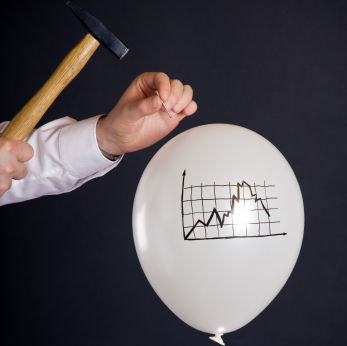
The economically intriguing issue, however, is price manipulation within the economy. Traders collaborate to drive prices of valuable/rare items (think immortal items) up by either hoarding and thus limiting the supply, or by creating false demand by falsifying information. The latter is usually accomplished by creating offers of higher prices for certain items on the market, without the intention of fulfilling them.
The false excess demand creates a bubble economy where the item is overvalued from its original equilibrium price. Traders panic and attempt to get into the action, creating a knock-on effect where prices rise rapidly. This bubble will eventually burst when owners of the item notice the price spike, and start selling their item en masse. The result is almost always the same: those who initiated the manipulation profit, while those who attempted to buy into the hype end up getting their fingers burnt. The price of the item ends up higher than it used to be, which becomes a larger stumbling block to new traders trying to enter the market.
Conclusion
In essence, the Dota 2 economy is quite possibly the closest humanity will ever get to the perfect free market, as detailed by Adam Smith in The Wealth of Nations. All sales are dictated by the individuals performing the trades, and the market (equilibrium) price is directly set by the supply and demand for items. This is enforced through the barter system since there is no real currency that can be used to measure the cost of each item.
The lack of human interaction removes mitigating factors such as empathy or having a conscience, ensuring that traders are out to make the most profit from random strangers. This makes it a cut-throat economy where each individual is out to maximise their individual utility.
In a system where perfect knowledge of prices is assumed, but not easily available, it is impossible for someone who has not delved into the inner workings to get fair deals on every trade, especially since the onus is on the buyer to add value to the trade.
Will things change in this economy? Unlikely, for there is no impetus for Valve to make changes to the current system at all.
Will Valve's focus on releasing cosmetics and profiting from the economy delay patches and hero releases? Only Valve knows.
Photos of the Secret Shop and Dota 2 Store courtesy of Valve



